2023-02-22
What is an eye-protection lamp
Before the best artificial light for reading was available, we had to settle for the second best, seeking light that was as little harmful to the eyes as possible, light that would not strain them as quickly. In the past, any artificial light that did not feel flickering could be called an eye-care lamp. Nowadays, however, it is clear that people are looking for more from an eye-protection lamp.
1. a white light similar to natural light, with a stable brightness and no flicker, which does not cause eye fatigue.
2. Uniform illumination, large luminous area, less likely to produce glare and large shadows that are harmful to vision.
3. Instantaneous lighting, quiet and noiseless after lighting. 4.
4. Green and environmentally friendly.
Types of eye protection lamps
According to the type of light
Electric heat type eye protection lamp

What are the categories of eye protection lamps
Ordinary incandescent lamps are in fact also a kind of eye protection lamp. Because the alternating current first heats up the tungsten filament, the tungsten filament heats up and then emits light, because the tungsten filament has a certain heat capacity, so when the power supply changes, the filament is still very hot and bright, the light and dark changes will not be as intense and obvious as the cold light source - fluorescent lamps (fluorescent lamps).
This is because the greater the heat capacity, the lower the frequency of change, i.e. the less noticeable the flicker. Thus, a long time ago there was also an eye protection lamp that used a filament with a large heat capacity (such as a halogen lamp), an improved version of incandescent eye protection.
This use of heat capacity (heat capacity size can be visually judged: after the light is turned on, the light is slowly lit up, that is, the heat capacity of the large; once the light is on, is the heat capacity of the small) of the filament of the eye lamp, there are generally two gears, usually first open the low gear first preheat the filament, and then open the high grade, to reach the rated power of normal lighting use, can effectively extend the service life. Because when the lamp is first turned on, the filament is not too hot, the current transient is relatively large, the filament is easy to burn off, resulting in the bulb life is not long.
Electric heat type eye protection lamp has almost withdrawn from the market, the main reasons are.
1. the form of heat first and then light, resulting in low heat and light conversion efficiency, short lamp life, not green enough.
2. Policy restrictions: incandescent lamp ban has been implemented (ban on the sale of incandescent lamps above 100W and tungsten halogen lamps below a certain energy efficiency index), few companies can still launch the use of high-power electric incandescent lamps.
3. General fluorescent lamps, incandescent lamps, quartz lamps emit 6500K colour temperature daylight colour or 2700K colour temperature incandescent colour, and bi-colour (incandescent, quartz lamps are reddish, fluorescent lamps are cyan) incandescent, quartz lamps are point light sources, uneven illumination, easy to produce shadows, are not good for the eyes light source.
Therefore, the electric type is also an eye-care lamp that I seriously do not recommend choosing to use.
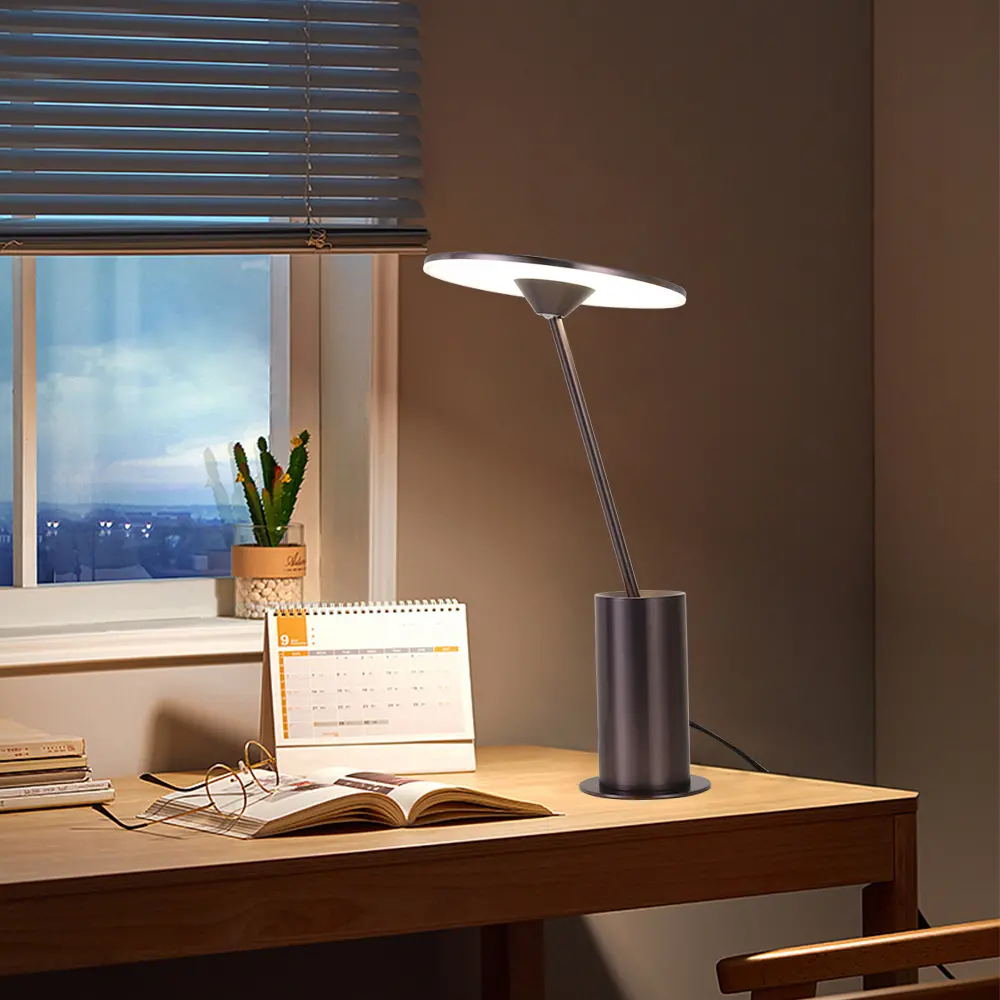
Traditional high frequency eye protection lamp
Explanation of the principle of high-frequency eye protection
The human eye is sensitive to various light sources. When strong light acts on the human eye, the pupil will contract; for weak light, the pupil will dilate. Too strong or too dark light will stimulate the retina and cause eye fatigue. At the same time, the objective presence of glare and reflection in artificial light sources further increases eye fatigue and causes vision loss.
A cartoon with a dozen or so frames a second can give people a feeling of lurching, while a film or television with twenty-four frames a second can give people a feeling of continuous and uninterrupted motion; because the human eye can perceive changes within 30Hz, Chinese alternating current is 50Hz, i.e. the direction of current changes 50 times a second. Therefore, fluorescent lamps that use AC directly are flickering, and the flickering frequency is generally double the frequency of AC, i.e. 100 changes per second. The 100 light changes per second (from bright to dark instantly, then from dark to light instantly ...... and so on in an uninterrupted cycle ......) are not perceived by us, but there are scientific studies that say that these changes (rapid non-stop flickering) for the human eye, can cause The light is not perceptible to us, but there are scientific studies that say that these changes (rapid and constant flickering) can cause eye discomfort and eye fatigue (for students who often use the light for study).
Traditional high-frequency lamps, using inverter electronic ballasts, the electrical frequency from 50H z to 5500H z or even higher frequency, the low-frequency flash to high-frequency flash, and then high-frequency alternating current lighting fluorescent lamps, is to change on tens of thousands of times per second to reduce the strobe, because the human eye simply too late to follow the change, so do not feel the change, from a certain point of view, can be said to be In a way, it can be said to be "non-flashing" for the purpose of eye protection.
This type of eye protection lamp generally uses trichromatic phosphor, which reduces the dazzling effect and makes the light soft and non-blinding, so that the human eye feels no strobe discomfort as a way to reduce visual fatigue, which is still an obvious improvement over the previous fluorescent lamps and has a certain eye protection effect.
Traditional high-frequency eye protection lamp is 10 years ago the mainstream eye protection technology, but also by CCTV invited many experts and professors to vigorously criticize the technology, but the market is the most controversial, so that the existence of its shortcomings are like bald on the lice - too obvious: 1.
1. High-frequency flashing is not the same as no flashing, and is not advertised as "strobe-free", and is still not suitable for prolonged use.
2. Fluorescent lamps must produce light by exciting phosphors with UV light (UV disinfection lamps use this principle to produce UV disinfection). Therefore, all fluorescent lamps produce UV radiation, including the most commonly used fluorescent lamps. But why don't we say that fluorescent lamps are harmful but eye protection lamps are? The reason is that fluorescent lamps are generally far away from the human body (at least 2 metres), while UV radiation from fluorescent lamps is harmful to the human eye at a distance of 1-2 metres, and the damage is exacerbated if it is within 0.6 metres, while eye protection lamps are certainly less than 0.6 metres away from students, so UV radiation from fluorescent lamps is not harmful to people, but The UV radiation from fluorescent lamps is not harmful, but the UV radiation from eye protection lamps can be very harmful. Some studies even say that long exposure to UV radiation can damage the lens and retina of the eye, leading to vision loss and even blindness!
3. Light pollution such as glare, uneven lighting and shadows lead to eye fatigue, soreness, tearing, lack of concentration and reduced learning efficiency.
4. Electromagnetic radiation produced by high-frequency electronic ballasts greatly depletes children's brain energy, making them dizzy and mentally exhausted, which greatly affects learning efficiency.
5. At the same power, electromagnetic radiation from high-frequency lamps is by far the largest, i.e. electromagnetic radiation from high-frequency lamps is greater than that from ordinary incandescent and fluorescent lamps, which may also cause another kind of harm.
Even if it has survived the test from all sides, it has now been proven that there are better options, so why choose a product made from this backward productivity?
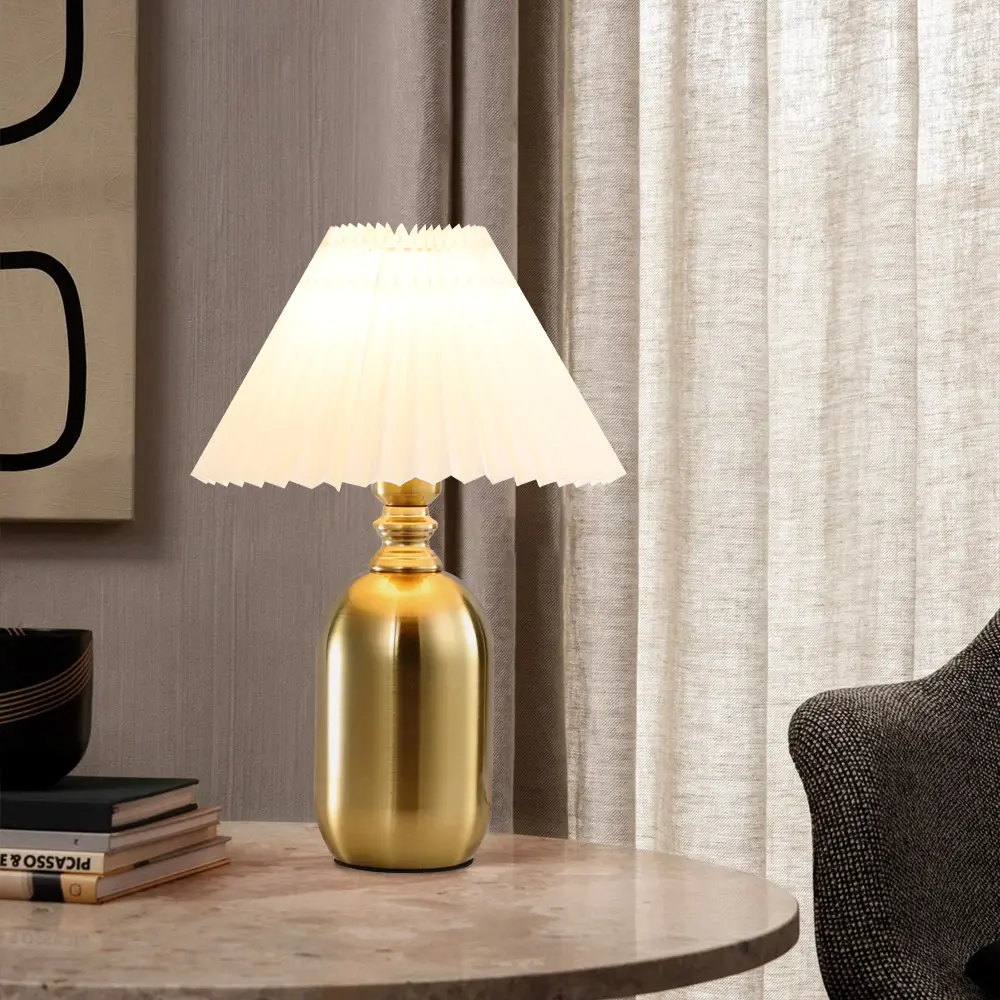
Energy saving eye lamps
Energy saving eye protection lamps, as the name suggests, use energy saving lamps as the lighting material. The main selling points of energy saving lamps, as the name implies, are
1. much more energy-efficient than the electric type
2. better colour rendering due to the use of trichromatic phosphors in the lamp
3. longer service life than incandescent lamps.
4. cheaper.
Other than that, there are no more bright spots than incandescent lamps, and even the most basic flicker is not solved (there are also programs that use high frequency to solve the strobe, with the same advantages and disadvantages as traditional high frequency, see high frequency above), which is really not a competent eye protection lamp.
In another report in the journal Science Life, American scientists have come to the preliminary conclusion that CFLs may pose a health risk after a long investigation.
In the test, which was completed by researchers at the State University of New York, it was shown that CFL bulbs have stronger UV radiation than ordinary bulbs. The luminescence principle of fluorescent lamps and CFLs is that mercury vapour is discharged to produce ultraviolet light, and the ultraviolet light excites phosphors to emit light. Although the phosphor and the lamp glass absorb the vast majority of UV light, UV radiation may still damage cells in human skin and may even induce cancer under extreme experimental conditions. Researchers recommend that the use of CFLs should be kept to a minimum and at an appropriate distance.
In this respect, CFLs are not suitable for use as desk lamps, let alone eye protection lamps, and are not recommended for use.
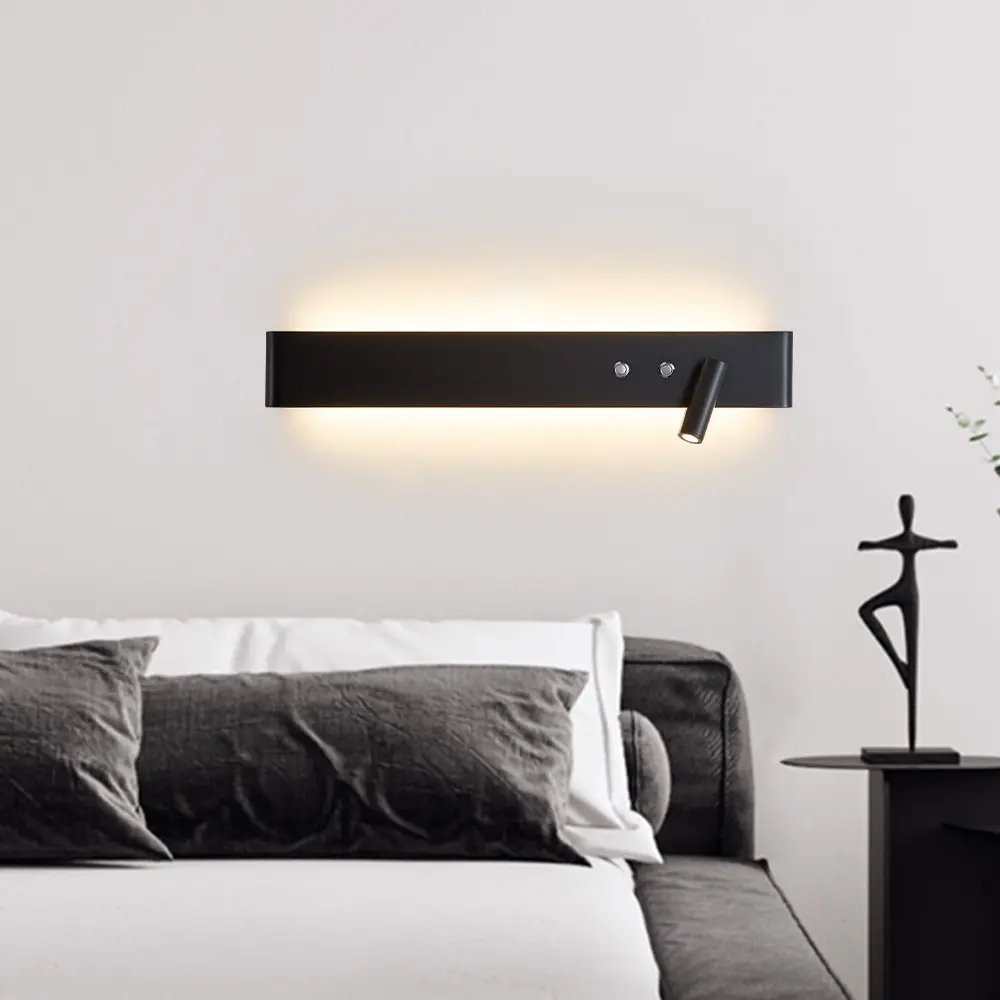
DC type eye protection lamps
Using DC ballast, by converting AC power into DC power with smooth voltage and current first, and lighting the lamp with DC power, it does not flicker at all, reaching a real strobe-free, and the light emitted when using is continuous and even light like natural light, very bright, but not harsh at all, very soft, greatly relieving visual fatigue, solving the problem of stroboscopic flicker that damages eyesight with inductive ballast fluorescent lamps; due to the DC technology used, there is It avoids the electromagnetic radiation and electromagnetic pollution caused by the high frequency oscillation of high frequency electronic ballast fluorescent lamps. In the past, the use of DC eye-protection lamps related to the technology of the product process is difficult and costly, many companies do not have this technology, the price is also unattainable, now the rapid development of science and technology, for this can not promote the fatal injury has brought a turnaround.
That is - the rapid popularity of LED.
Currently, eye protection lamps that are commonly available in the market using DC power are mainly using the led solution.
In addition to the advantages and disadvantages described in the text, there are some more cautionary points when using led as a source of light at close range.
1. traditional light sources are mostly warm tones, as the most common technical solution for LED lamps is "blue chip + yellow phosphor", LED light is mainly white and cool tones, and the content of blue light in its light is relatively high. (The so-called blue light refers to the visible light in the wavelength range of 435 nm to 480 nm.) Some medical studies have shown that too much blue light can cause photochemical damage to the retina and also affect the body's melatonin secretion, disrupting the biological clock. Blue light that is too bright may cause photochemical damage to the retina when it enters the eye.
2. Low colour temperature LEDs with frosted incandescent lamps, diffusion panels or diffusion shields can limit blue light spillage, while individual LED lamps that are overly advertised as particularly bright may have a blue light ratio that exceeds the safe value, while the spillage of blue light is not harmful when the colour temperature and brightness are controlled in the right range.
3. Thankfully, with the increasing maturity of the LED process, manufacturers no longer need to achieve high lumens by simply increasing the colour temperature and power of the luminaire, which objectively also reduces the possibility of excessive blue light.
4. LED light sources are relatively cool (what people call "warm light" has a lower colour temperature and "cool light" a higher colour temperature). When exposed to cold light sources for long periods of time at close range, the comfort level of the eyes is reduced.
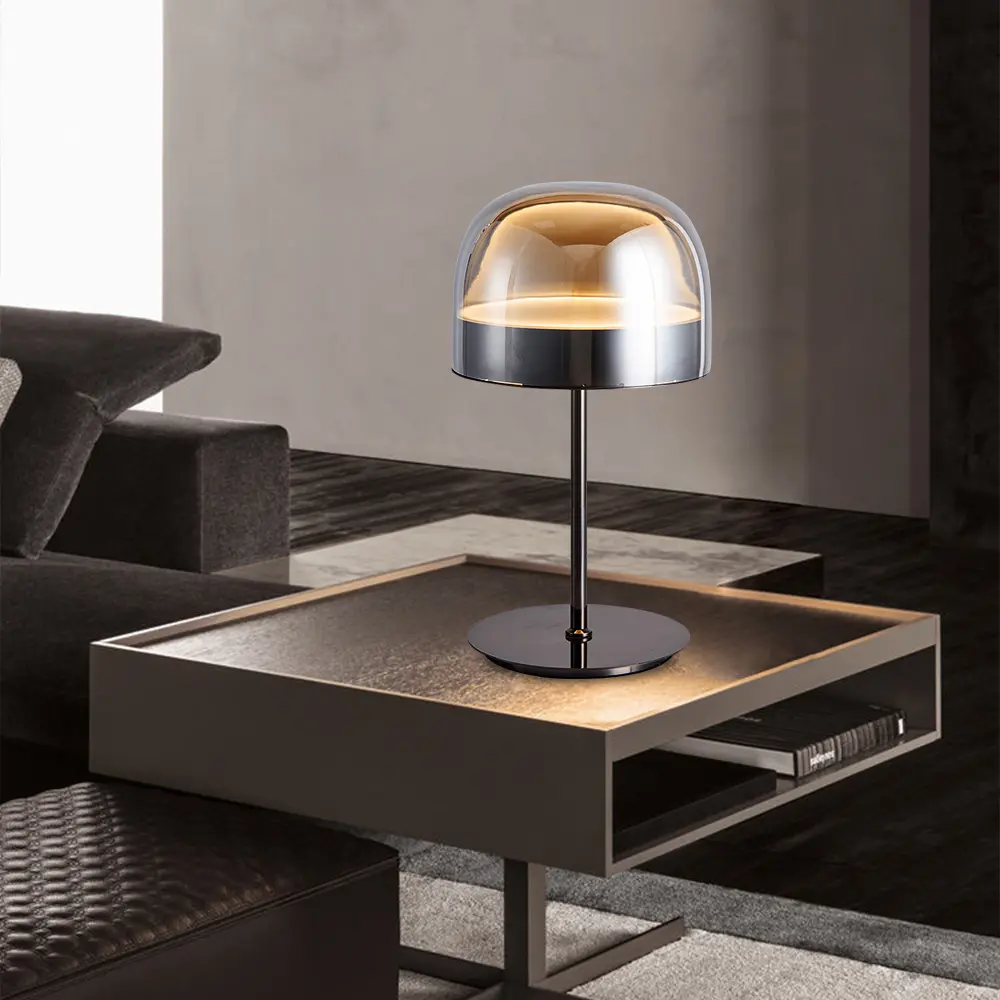
Other eye protection lamps
Consider the effect of light reflections on the human eye. Some have thought of adding another layer of filter between the light and the user, which can effectively increase the amount of light needed and reduce the amount of light not needed, while filtering out some of the invisible light that can be harmful to the human body.
Some commercial companies claim that the most comfortable and common reading angle for the average person is around 58° (some believe that 45% to 50% is the most appropriate), however, the 58° angle is also the angle that produces the most glare, and the addition of the filter effectively solves this problem by filtering out the harsh reflected glare from the 58° reading angle.
There is no further scientific literature to support this commercial view, so I will not take a position on it as I know a little more.
By functional type
Intelligent eye protection lamp
In most cases, if you have been reading and writing seriously for more than 45 minutes, your eyes will start to get tired. At this point, a timer with a smart chip inside the lamp will play music to remind the user that they should take a break and relax, do eye exercises or look away, which is beneficial for teenagers who can never finish their homework and adults who often forget to do paperwork. Avoid vision loss due to constant eye strain.
Oxygen Bar Anion Eye Lamp
Its slogan is: purifying the air, allowing people under the lamp to breathe fresh oxygen and avoid brain fatigue. Eye protection, anti-fatigue and health care.
This lamp has a negative ion generating head on the lampshade, which can be seen as a carbon fibre brush. The high voltage generated by the high voltage generating circuit at the bottom of the lamp base generates a micro-current of high voltage, which is discharged by the carbon fibre brush head, ionising the electrons carried by oxygen in the air, generating a free negative charge, which combines with other oxygen atoms to generate negatively charged oxygen, i.e. negative oxygen ions. Negative oxygen ions have good biological activity and can easily enter the human body to play a biological effect, which is beneficial to human health. Therefore, negative oxygen ions are also known as the "air vitamin".
Medical research shows that when the concentration of negative oxygen ions reaches more than 700 per cubic centimetre, it will have a health effect on the human body, and when the air contains more than 10,000 negative oxygen ions per square centimetre, it will have the effect of treating diseases. It is estimated that people need about 13 billion negative ions per day, but indoor venues such as living rooms, offices and entertainment venues can only provide about 200 million to 2 billion negative oxygen ions.
Looks wonderful doesn't it? But the amount of negative oxygen ions produced as a by-product of this eye-care lamp is so small as to be almost negligible, hardly the amount needed for health care, and the negative ions are generated and decayed so quickly. It will "disappear" near the lampshade in a while, not to mention that the negative ion generator itself will also consume oxygen in the air, so the effect of increasing indoor negative oxygen ion content is not obvious. When the concentration of negative oxygen ions in the air is low and the air is not "nutritious" enough, people tend to feel dizzy and swollen, so it is best to open windows and let the air circulate.
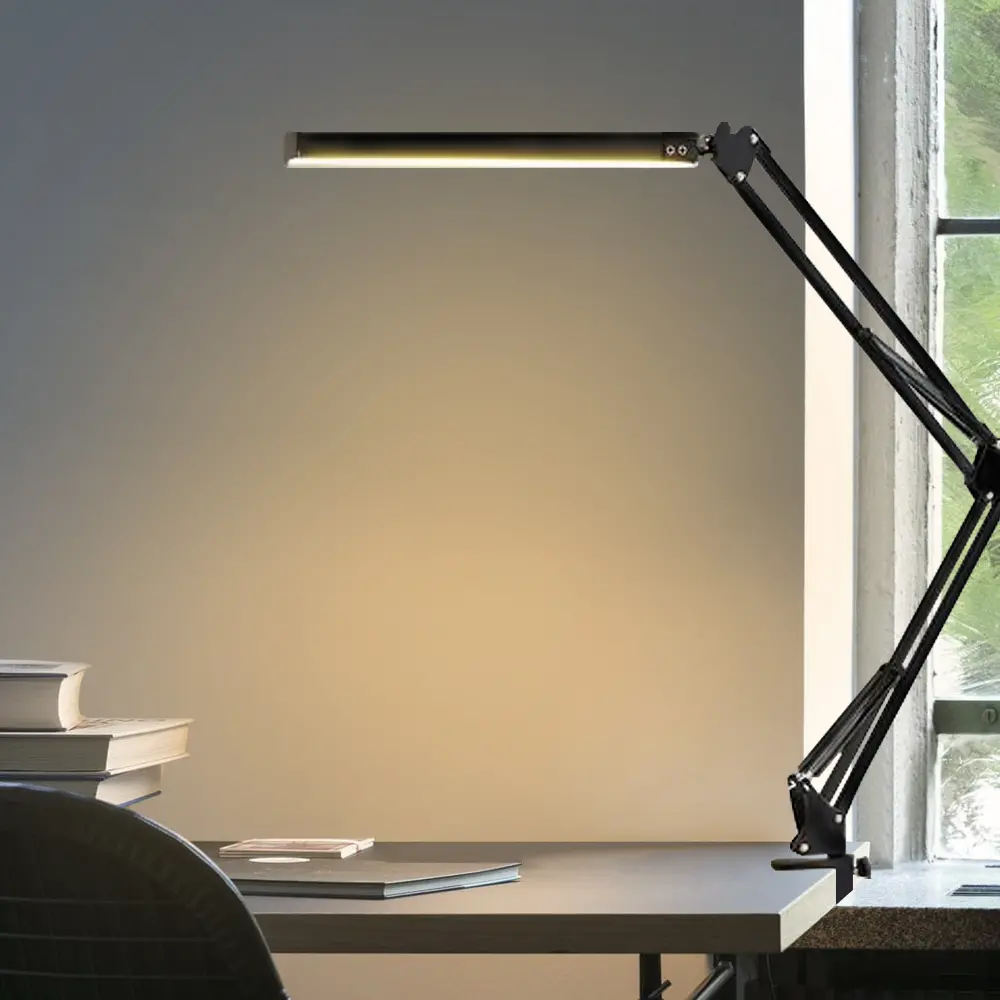
Not recommended for any lamps with this gimmick.
Micro-computer light measurement lamps
There are currently 2 main types of eye protection lamps on the market with photometric functions.
1. Semi-automatic eye protection lamps with low level points, which automatically turn on a warning colour indicator without human control when the ambient light level falls below a certain lux (usually 150lux - 200lux) (lux is the amount of luminous flux received per unit area. 1 lux = 1 lumen/square metre). This alerts the user that the ambient light is now insufficient and that other lighting or eye protection lamps need to be switched on to supplement lux in order to avoid eye damage from studying in a low light environment, thus taking care of the user's eyes.
2. is a more advanced point of fully automatic photometric eye protection lamp, the basic principle is the same as above, by the brightness sensor to sense the intensity of external light, so as to automatically adjust the current lighting lumens, so that the user is not affected by the external environment, always in a suitable lux value range.
1 is a very practical, 2 is very intelligent eye protection lamp, may be because of patent licensing reasons, these functions of the eye protection lamp is "good not good", the market is difficult to find a trace, because the competition is not fierce, the development is also stagnant, the price is still high, other aspects of the development is not very good, not recommended to choose.
Infrared sitting correction eye lamp
It does not only provide the required light source, but also from the sight distance, sitting posture, and timing tips, etc., using a variety of modern sensors (mainly through infrared induction), to start the function of voice alarm, for example, when sitting posture is not correct, the head and the light body distance is too close to start the alarm to remind, voice has been prompted until the sitting posture correct, there are some lights in the sitting posture correct, there is a voice praise, encouragement.
When the user reads and writes at the wrong distance (less than 25cm from the desk) and sits in an incorrect posture, the eye protection lamp's monitoring device will sound to prompt the user to correct the situation, in order to prevent the user from becoming nearsighted and hunchbacked as a result.
It seems to be a boon for primary school students who have not yet developed good reading and writing habits. However, according to the survey, there are more products from smaller manufacturers, and no recommended and trusted products were found.
Rechargeable eye-protection lamp
The so-called rechargeable possibility, because it comes with a 600mah to 1200mah maintenance-free lead-acid battery, because it is convenient to carry, commonly used in the night time, under the flyover stalls on those who avoid the city police to run the transaction lighting; there is the possibility of eye protection, because it uses the led lamp beads, is a member of the DC type lighting; but there are allegations of hanging sheep's head to sell dog meat, which is simply the simple lighting fixture, but, that's how the merchant advertises it - I am the eye protection lamp, what can you do with me?
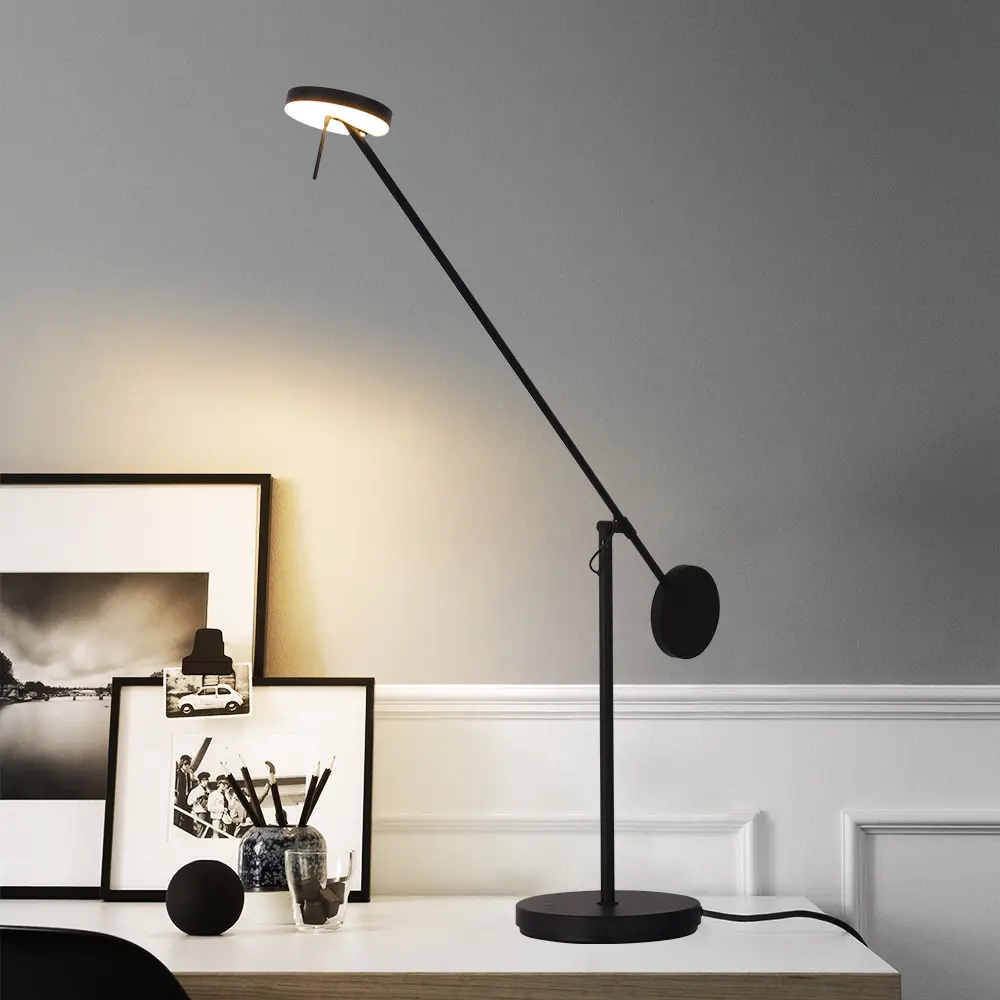
Disadvantages of rechargeable eye protection lamps.
1. limited by the limitations of the storage capacity, and to increase the use time as much as possible, the power are relatively low, not bright enough, easy to fatigue and hurt, without taking into account any eye protection factors such as glare, so it can not protect the eyes at all.
2. It takes a long time to charge and a short time to use.
3. Not durable, lead-acid battery life of more than 1 year only out of the electricity, no electricity into the.
Advantages of rechargeable eye protection lamps.
1. Cheap, no pain when it breaks.
2. Simple, can be folded, easy to carry when you go out to use.
According to the scope of use
Children's eye lamps
It is generally believed that eye protection lamps for children should only be designed with children's favourite features (such as ducklings, puppies, kittens and other cute shapes) and a series of animal cartoon images (such as Pleasant Goat, Grey Tai Yang, etc.). In fact, this is not enough.
1. considering children's curious and hyperactive habits of use, it is best to design with an automatic power-off switch in case of tipping and an over-current protection device for a more secure use.
2. traditional high frequency eye protection lamps must be excluded, because the elderly, children, pregnant women belong to electromagnetic radiation sensitive people, and high frequency flash has a potential hazard of electromagnetic radiation.
Children's eyesight is not yet fully developed, so they can use a smaller eye lamp with a wattage of 10 watts (incandescent equivalent), and try to use a soft light eye lamp, not a pure white light table lamp, because the light is too bright will stimulate the child's eyes and affect vision.
4. It is best if the light is a creamy yellow light source, which is also consistent with the light source used for retinal imaging. This light is softer and best protects the child's delicate eyesight.
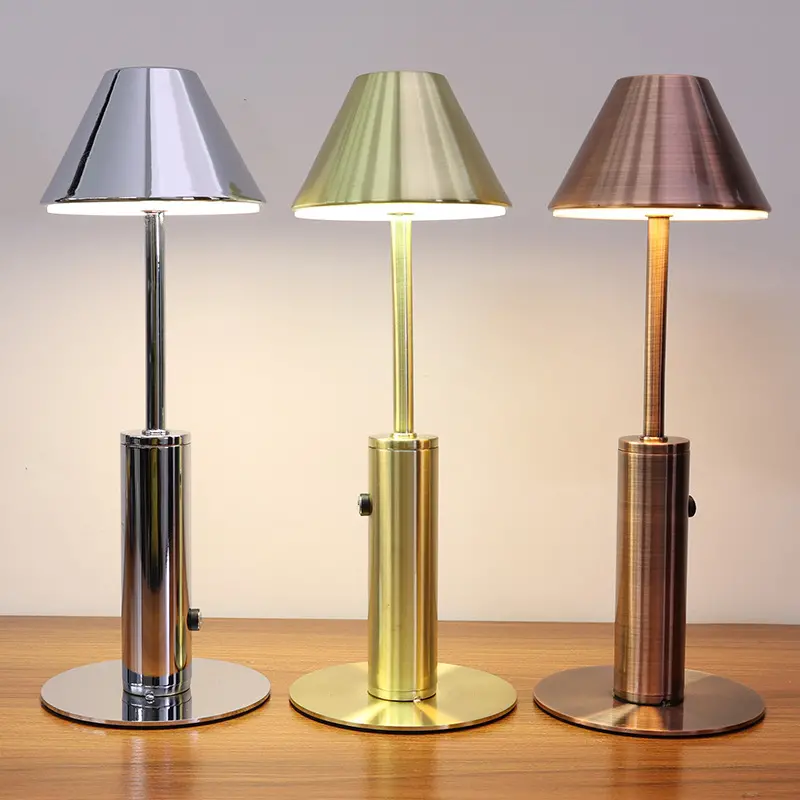
Eye protection lamps for students
Firstly, before using a lamp, students who use a lot of their eyes day after day, year after year during the study phase would do well to read and study in a place with soft light, where the contrast of light is not too great, and where a large ambient light can be lit at home, before using a desk lamp or eye protection lamp, in order to protect their eyes.
From the history of obesity of school bags, you can see the blood and tears of students' struggle, that eternal theme from childhood companionship to youth - countless books and homework, means that a lot of time is needed in the company of old trees and dim crows in the dead vine, so the focus of my division in the functional type is basically for the students' eye protection lamp, also he has Infrared sitting correction alarm and other functions of the eye protection lamp.
In addition, different students have different colour temperatures.
Generally speaking, eye protection lamps from 4000K to 4500K have a slightly redder, softer light and are suitable for primary school students, while colour temperature values from 4500K to 5200K are suitable for secondary school students and above.
Eye protection lamps for pregnant women
The sensitivity of pregnant women to electromagnetic radiation can be seen in the daily use of radiation-protective clothing, radiation-protective covers for mobile phones and minimising the use of induction stoves, as the dangers of electromagnetic radiation are really very great: 1.
1. electromagnetic radiation is a major cause of cardiovascular disease, diabetes and cancer mutations.
2. electromagnetic radiation is harmful to the human reproductive system, nervous system and immune system. 3.
3. electromagnetic radiation is a trigger for miscarriage, infertility and deformed foetuses in pregnant women.
4. Electromagnetic radiation directly affects the development of children, leading to loss of vision, retinal detachment and reduced hematopoietic function.
5. Medical evidence shows that prolonged absorption of electromagnetic radiation by the eyes and brain can cause cloudy eyes, cataracts, memory loss, dementia and brain cancer, affecting the physiological functions of the next generation. (This is an excerpt from Baidu.com)
Therefore, when using eye protection lamps, for the health of the next generation, you need to be especially cautious and try not to choose traditional high frequency eye protection lamps that are tens of thousands of times per second (the energy derived from electromagnetic radiation depends on the frequency, the higher the frequency, the greater the energy, thus causing more harm to the human body, and the greater the damage to the human nervous system and immune system.)
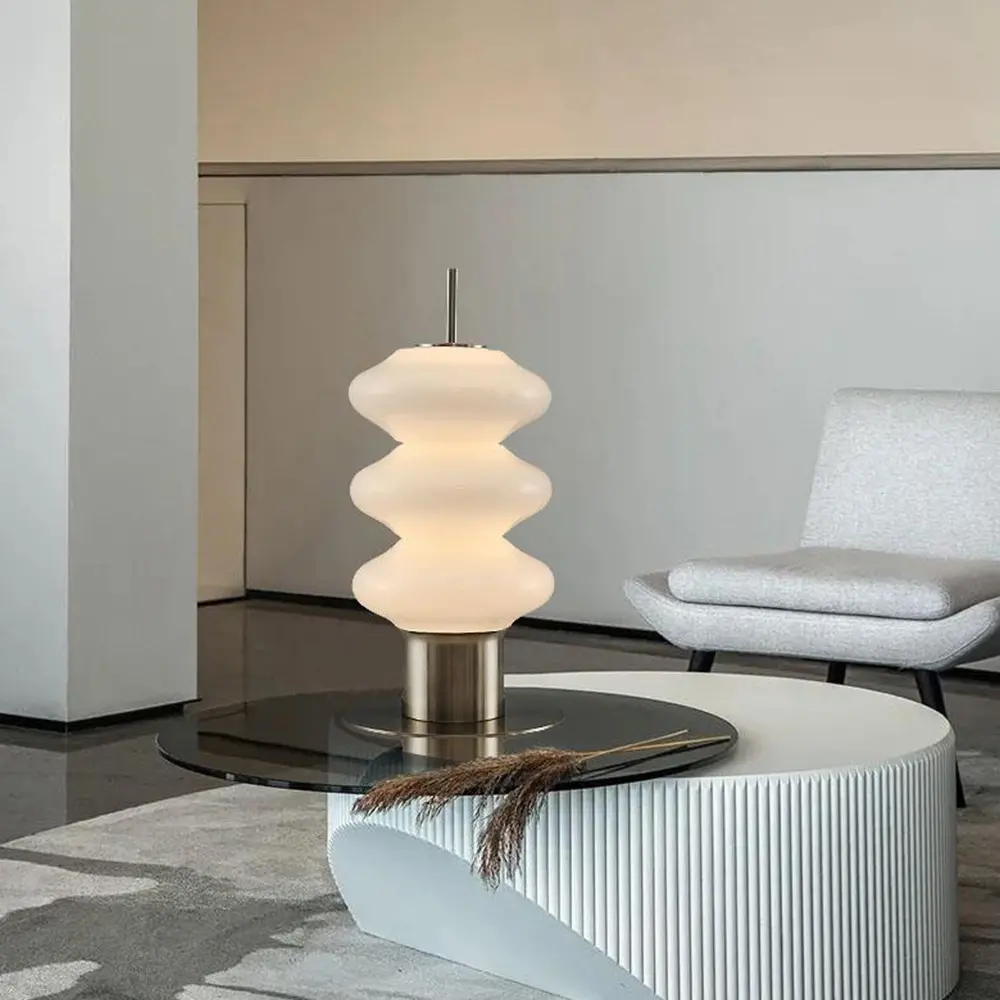
Office commercial eye protection lamps
Commercial lamps and lanterns must first of all be elegant and generous, serious and atmospheric, with a calm temperament, the appearance of the office environment, as part of the office, can not look too abrupt, noisy, the main character of the office.
Secondly, the need to consider the business environment is very complex, for example, when playing the PowerPoint auxiliary light, with the overtime stay up late to catch the manuscript needed to protect the eyes, the demand is completely different, and desk space is limited, it is impossible to put a bunch of lamps, so there is a space-saving, adjustable brightness of the lamps is necessary.
Again, at times, the number of people involved in business meetings, the theme of different, or office, negotiation room and other environment, subject to space constraints, there is a lift, flexible 360 degree rotation, flexible adjustment of the eye protection lamp, will also enable you to work like a fish in water.
Finally, eye protection lamps with a power of 25 watts (incandescent equivalent) or more are generally required to meet the requirements of a wide range of lighting.
After reading the above introduction about the types of eye protection lamps, do you have a better understanding of eye protection lamps? To learn more about lamps and lanterns, please stay tuned.
-THANKS FOR WATCHING-